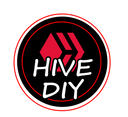Today my dear friends of this ecosystem, I share with you a cute worm keychain that I made to give to a friend. She is coming to my city to do some work but I will share this story with you another time.
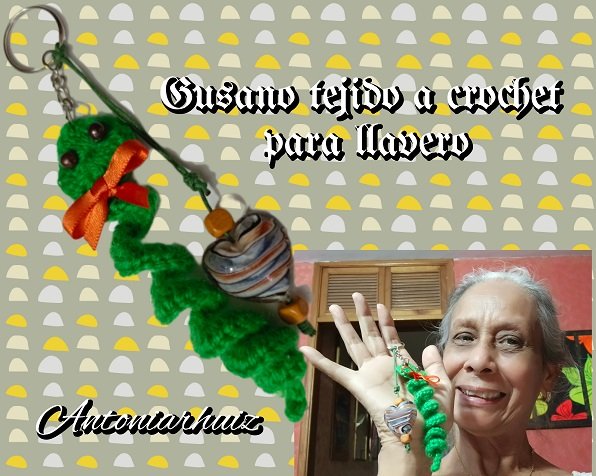
I thought of a welcome gift and after thinking about it I decided to make a keychain. Who doesn't carry keys? Although nowadays they are used as ornaments on handbags. I thought it was a good idea and I started to inventory the materials I have to make crafts.
Knitting is not something I like to do very much and even less that I know how to explain but I don't know why I wanted to knit, it is possible that it was because I like to vary techniques. I don't dislike knitting at all but I tend to do small things without so much complication and that don't take me a lot of time.
I remember a tablecloth of two giant pineapples that I never finished and I threw it away because it eventually turned yellow; I have a hammock that I started months ago and have not finished, I stopped the elaboration. Don't worry, I'm not going to throw it away but I have to make sure to explain it here on the platform when I'm done.
Continuing with the keychain, I made a worm woven with wool or worsted yarn and that is what I am going to explain in this post. This little worm is very simple and extremely easy. Follow me.
! [SPANISH]
Hoy mis queridos amigos de este ecosistema, les comparto un lindo llavero de gusano que hice para regalar a una amiga. Viene a mi ciudad a realizar un trabajo pero este cuento se los compartiré en otro momento.
Pensé en un detalle de bienvenida y de tanto pensar me antojé de un llavero. ¿Quién no carga llaves? Aunque en la actualidad se usan como adornos en los bolsos. Me pareció bien la idea y me dispuse a inventariar los materiales que tengo para hacer manualidades.
El tejido no es algo que me agrade mucho hacer y menos que sepa explicar pero no sé por qué quise tejer, es posible que haya sido porque me gusta variar técnicas. Tejer no me disgusta del todo pero tiendo a realizar cosas pequeñas sin tanta complicación y que no me lleven mucho tiempo.
Recuerdo un mantel de dos piñas gigantes que nunca terminé y lo boté porque con el tiempo se puso amarillo; por ahí tengo una hamaca que comencé hace meses y no he terminado, paré la elaboración. Tranquilos, que no lo voy a botar pero tengo que mentalizarme para explicarlo aquí en la plataforma cuando termine.
Continuando con el llavero, hice un gusano tejido con lana o estambre y es lo que voy a explicar en este post. Este gusanito es muy sencillo y sumamente fácil. Síganme.
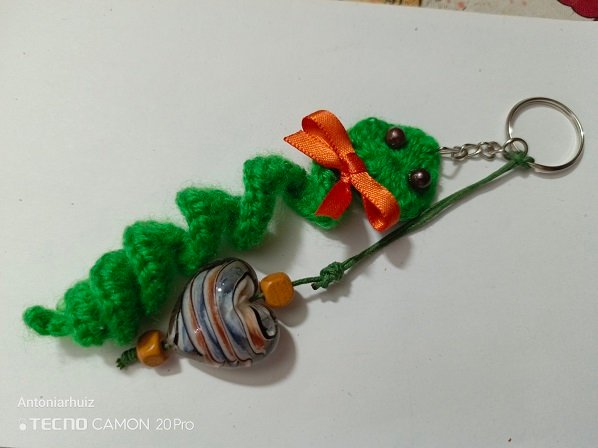
Crocheted worm for a keychain
For this project we need wool, a crochet needle 00; although it is better #3 but I do not have; a keychain ring with chain, two pearl beads, silicone and an additional ornament for decoration; as you can see the materials are few.
! [SPANISH]
Gusanito tejido a crochet para llavero
Para este proyecto necesitamos lana, una aguja de crochet 00; aunque es mejor #3 pero no tengo; un aro para llavero con cadena, dos cuentas de perla, silicón y un adorno adicional para la decoración; como pueden observar son pocos los materiales.
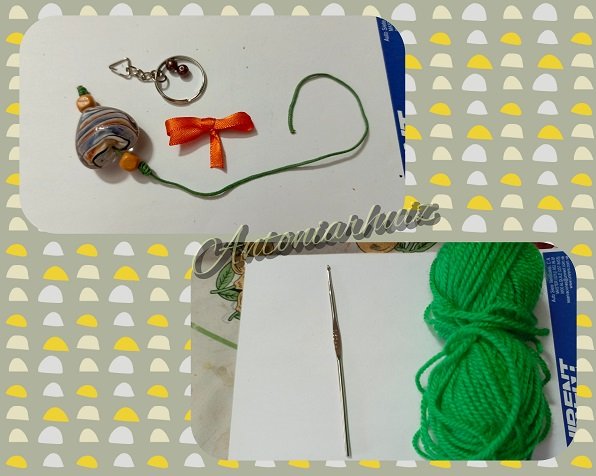

Procedure
1- Assemble a chain of 40 stitches or more; if you wish, this will not alter the weave.
! [SPANISH]
Procedimiento
1- Montar una cadena de 40 puntos o más; si lo desean, eso no va a alterar el tejido.
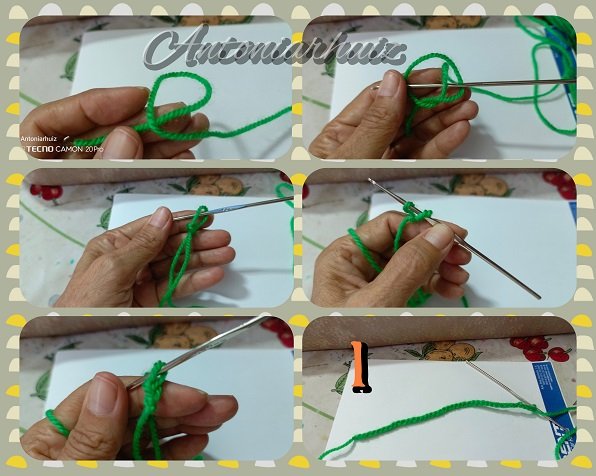
2- Begin the tail of the worm by placing a single crochet in each of the stitches of the chain; the more single crochets you place, the longer the tail will be. In this case, I took only 4 stitches.
! [SPANISH]
2- Iniciamos la cola del gusano colocando un punto raso en cada uno de los puntos de la cadena; mientras más puntos rasos colocas, más larga será la cola. En este caso, tomé solamente 4 puntos.
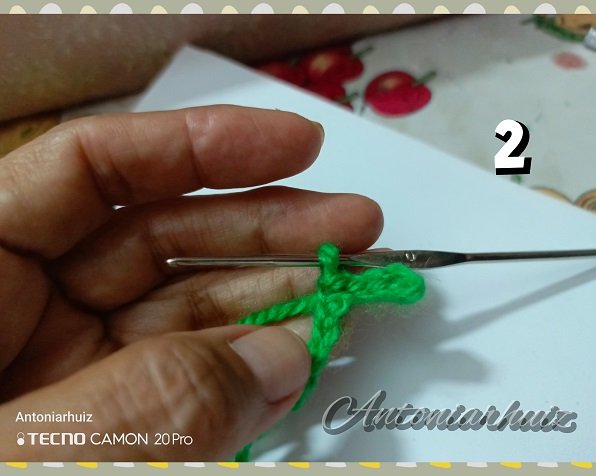
3- We continue, knitting a medium stitch.
! [SPANISH]
3- Seguimos, tejiendo un punto medio.

4- In the next stitch of the chain, we cast on 4 medium stitches and then in the following stitches until 3 stitches of the chain are free. As the knitting progresses, the stitches are twisted.
! [SPANISH]
4- En el punto siguiente de la cadena, clavamos 4 puntos medio y luego en los siguientes puntos hasta que queden libres 3 puntos de la cadena. En la medida que se avanza en el tejido se va enroscando.
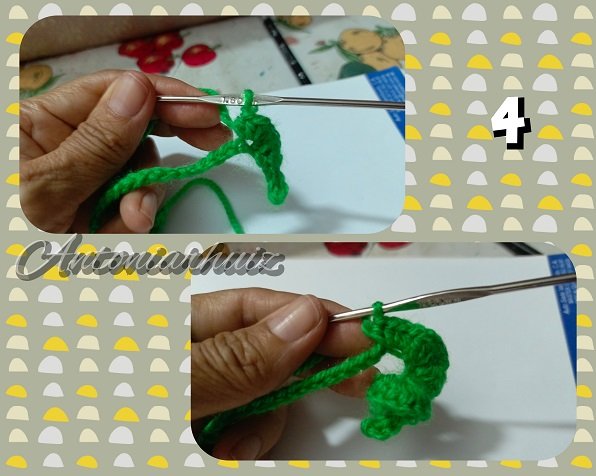
5- To start the head, in the first free stitch of the chain we knit 7 high stitches.
! [SPANISH]
5- Para iniciar la cabeza, en el primer punto libre de la cadena tejemos 7 puntos altos.
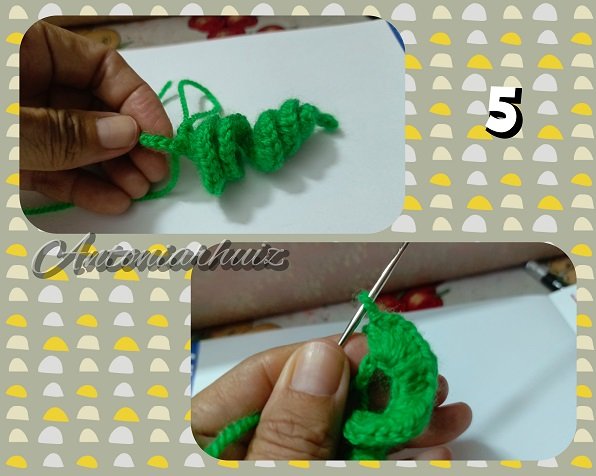
6- We skip the second stitch of the chain and in the last stitch we knit a single crochet to join.
! [SPANISH]
6- Saltamos el segundo punto de la cadena de la cadena y en el último punto tejemos un punto raso para unir.
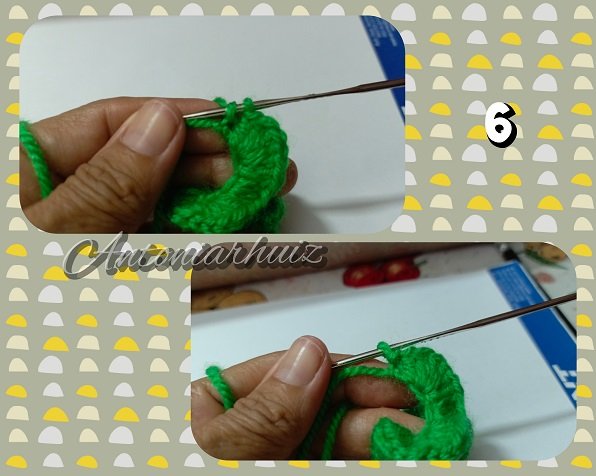
7- In the stitch where we put the seven previous stitches we place 7 high stitches and a medium stitch closing with a single crochet; in this way the circle of the head is formed.
! [SPANISH]
7- En el punto donde pusimos los siete puntos anteriores colocamos 7 puntos altos y un punto medio cerrando con un punto raso; de esta manera queda formado el círculo de la cabeza.
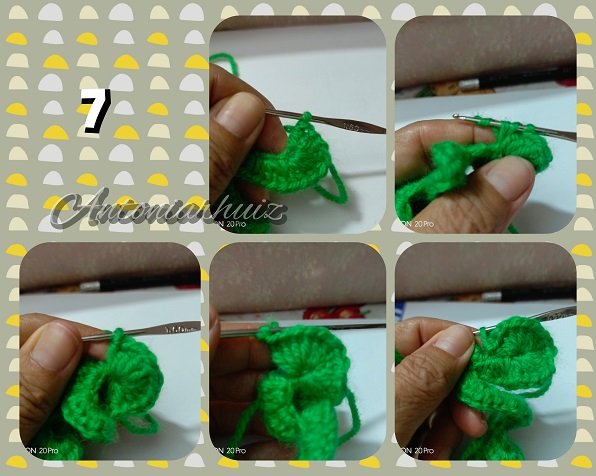
8- Hide and cut the loose strands. Decorate.
! [SPANISH]
8- Esconder y cortar las hebras sueltas. Decorar.
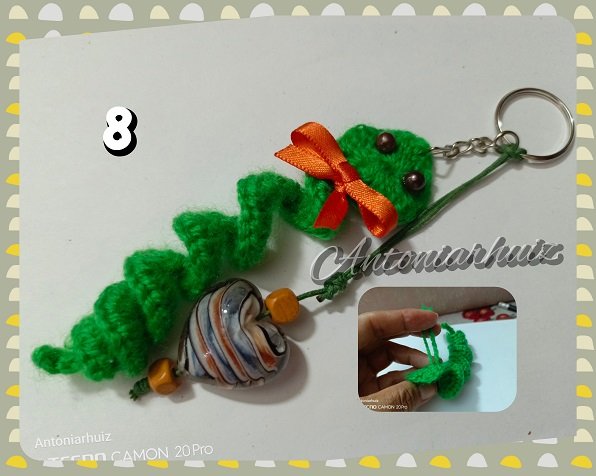
Friends, I hope you liked the little worm and I encourage you to knit one; you can do it in any color or knit several different colors to decorate whatever you like.
! [SPANISH]
Amigos espero que les haya gustado el gusanito y se animen a tejer uno; pueden hacerlo de cualquier color o tejer varios de colores diferentes para decorar lo que gusten.
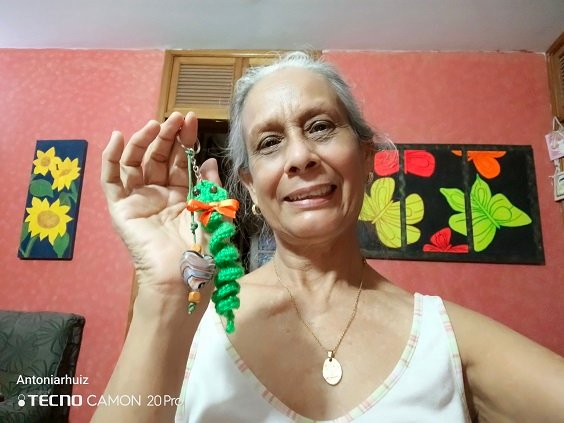
Información Information Todas las fotos son propias All potos are my own Imagen editada en GridArt del teléfono Tecno Camon 20 Pro Imagen editada en GridArt del teléfono Tecno Camon 2 Pro Traducción en traductor Deepl versión gratuita Deepl translator free versión 




